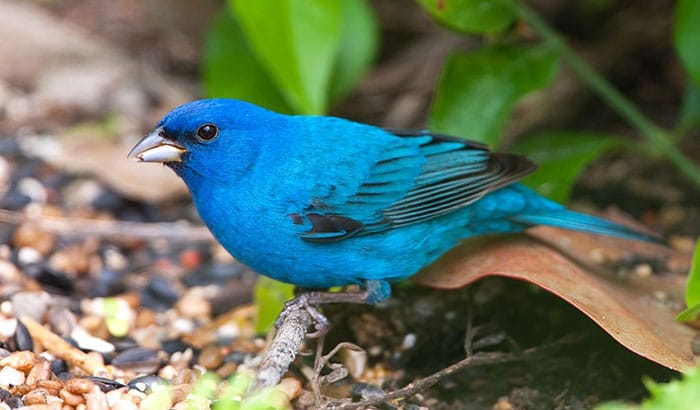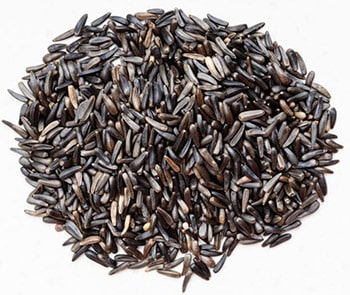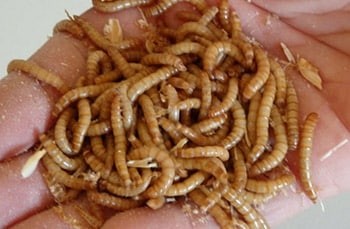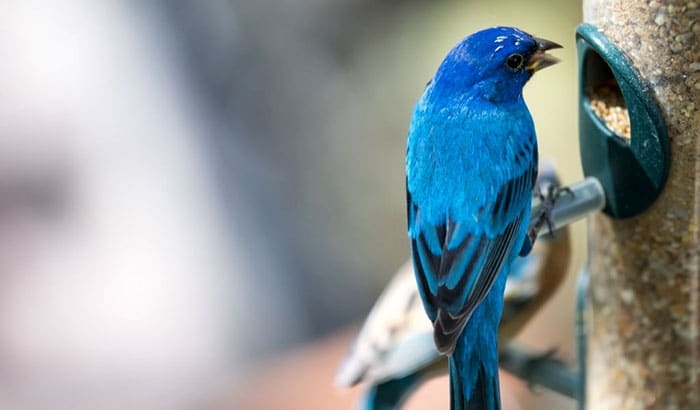Indigo buntings are colorful, especially the male ones with their magnificent royal blue plumage. Without a doubt, seeing these birds in your garden brings happiness and joy since these birds are naturally shy and aloof. So, how to attract indigo buntings into your garden? We have listed different tips for you to do to have these beautiful birds visiting in your backyard at the soonest possible time.
Contents
Giving Them the Right Food
Indigo buntings love to eat a variety of foods. So, it is a must for you to set up your bird feeder and put those foods that they love to eat. Please find below the different foods that they like to consume.
Small seeds
These birds like to eat tiny seeds during the summer, which means you need to put these types of seeds in your bird feeder. Among the seeds that they like are nyjer seeds, sunflower seeds, wild blackberry, millet, and goldenrod. They also want to eat insects during the warm months,
These birds also like different types of berries, particularly thistle, dandelions, oats, and many more. Since the buntings are not really that picky, you can put these seeds on the feeder to start attracting them into your garden.
Mealworms
During the cold winter months, the diet of these colorful birds changes as they prefer to consume seeds and insects. You can probably put mealworms into the feeder during this time of the year to attract them.
Do not get me wrong, but live mealworms are usually available in the nearest bird store near you. This bird food is composed of dehydrated mealworms, which require less maintenance and usually last longer.
When giving this food to the birds, it may take a while for them to realize the food you put on the feeder, but once they know, the birds will start coming to your feeder.
Providing Excellent Water Source
Apart from food, having an excellent water source can lure indigo buntings from coming to your garden. You will need to install birdbaths in the backyard for the birds to drink and bath the moment they visit your place.
Also, if there is a natural water source in your garden, the better. If not, installing a pond is also a great alternative apart from the birdbaths. Just make sure to keep the water source properly maintained and clean all the time because it can affect the bird’s overall health.
Using the Right Bird Feeder
Using a suitable bird feeder can also enhance the chance of attracting indigo buntings in your garden. You will need to use a tray feeder or a finch feeder for these birds. It will be great if it has perches designed for small birds.
Meanwhile, if squirrels constantly visit you, my suggestion is to put the bird feeder of your choice in a cage. Doing this action will help in keeping these pesky small animals from invading the feeder.
Make your Garden Similar to Their Ideal Habitat
If you want to lure more of these birds, you must start converting your garden into something similar to its ideal habitat. But how will you do it? Make your place have plenty of bushes and hedges. You can also start planting berry-producing shrubs and flowers for the birds interested in your place because it provides a natural shelter and an excellent food source.
You can start planting blackberries, strawberries, blueberries, and many more for the birds to visit your place regularly. These plants can also attract insects such as grasshoppers and beetles, which is also an alternative food for them.
Providing a Place to Nest
Indigo buntings build their nest on small trees and bushes in the wild. They will not use an artificial nesting box once you provide it to them. But what you can do is have more plants and shrubs in your area to give them the shelter they need for nesting.
You can also use commercial nesting material such as WBU nesting material ball and alpaca Fleece to enhance your chances of luring them during their nesting season. Once they like the nesting area, it will be a sight to behold as they will stay more often in the place once they start gathering their nesting materials.
Make Your Place Organic
Making your place organic will also enhance your chances of attracting these migratory birds. You need to avoid using chemicals in all of the surroundings. Avoid using fertilizers and pesticides when planting plants and flowers. The absence of fertilizers and pesticides will also help multiply the population of insects which is also an excellent source for the birds.
Conclusion
In learning how to attract indigo buntings to your garden, you need to consider their food, shelter, and security. These migratory birds are timid, which means you need to be patient in attracting them. Giving them the right food and the ideal habitat will make them come to your place at the soonest possible time.




